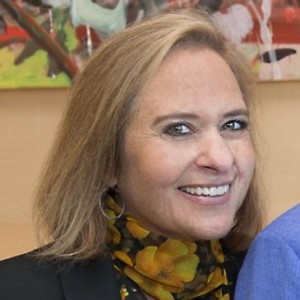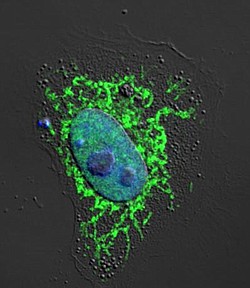Daily Business Report-April 15, 2016
Illumina Inc.’s San Diego campus
Illumina Commits $100 Million
To Genomics Venture Capital Fund
Illumina Inc. has committed $100 million in a new venture capital firm that is strategically aligned with Illumina’s vision to improve human health by unlocking the power of the genome.
Illumina Ventures was established by Nicholas Naclerio, Illumina’s former senior vice president.
The independently managed firm will pursue investments in early stage companies that are pioneering new applications of nucleic acid sequencing, developing products that will expand the genomics ecosystem, and utilizing genomics to improve human health.
“Under Nick’s leadership, internal venture investing has worked well for Illumina, providing strategic insight and connections to key technologies and channels in our industry,” said Jay Flatley, chairman and chief executive officer for Illumina. “Participating in an independent fund led by Nick that can leverage capital and know-how from other investors who share our strategic interests is an even more effective way for us to utilize Illumina’s capital to create incremental shareholder value.”
Illumina will be the majority limited partner in the first fund with a commitment of $100 million, which will be callable by the fund over 10 years.
________________________________
Jobless Rate for March: 4.7 Percent
Unchanged from February
Nonfarm jobs up 9,300 over the month; 39,700 over the year
The unemployment rate in the San Diego County was 4.7 percent in March 2016, unchanged from a revised 4.7 percent in February 2016, and below the year-ago estimate of 5.4 percent, the state Employment Development Department reported today.
This compares with an unadjusted unemployment rate of 5.6 percent for California and 5.1 percent for the nation during the same period.
Between February and March:
total nonfarm employment increased from 1,397,600 to 1,406,900, a gain of 9,300 jobs. Agricultural employment increased by 400 jobs over the month.
• Leisure and hospitality reported the greatest month-over gain, adding 3,000 jobs. Nearly 80 percent of the increase was in accommodation and food services (up 2,300 jobs) led by advances in food services and drinking places.
• Government gained 2,200 payroll jobs. Local government (up 1,900) contributed to roughly 86 percent of the job growth in this sector, mostly from seasonal advances in local government education (up 1,500). State government added 300, with all the increase in state government education. Federal government reported no change.
• Trade, transportation and utilities increased by 1,500 payroll jobs. Retail trade added 900 jobs, wholesale trade gained 600 jobs and transportation, warehousing and utilities remained unchanged.
• Construction was the only sector to decline over the month (down 300 jobs). Three sectors recorded no change: mining and logging, manufacturing and information.
Between March 2015 and March 2016:
Total nonfarm employment increased by 39,700 jobs, or 2.9 percent. Agricultural employment added 100 jobs, or 1.1 percent.
• Professional and business services reported the greatest year-over gain, adding 7,300 jobs. Nearly 60 percent of the increase was in administrative and support services which includes temporary help firms.
• Educational and health services increased by 7,000 jobs, led by advances in healthcare and social assistance (up 6,600 jobs) which accounted for 90 percent of the increase.
• All major sectors recorded year-over job growth except mining and logging, which reported no change in employment levels over the year.
Salk Scientists Uncover Hidden Energy
Switch to Benefit Diabetic Patients
Salk scientists have solved a longstanding problem in the effort to create replacement cells for diabetic patients.
The team uncovered a hidden energy switch that, when flipped, powers up pancreatic cells to respond to glucose, a step that eluded previous research. The result is the production of hundreds of millions of lab-produced human beta cells — able to relieve diabetes in mice.
For more than a decade, scientists across the globe strived to replace failing pancreatic beta cells linked to immune destruction in children (type 1 diabetes) or obesity-associated diabetes in adults (type 2 diabetes). Although cells made in a dish were able to produce insulin, they were sluggish or simply unable to respond to glucose.
“We found the missing energy switch needed to produce robust and functional human beta cells, potentially turning this discovery into a viable treatment for human diabetes,” says Ronald Evans, co-senior author and director of the Gene Expression Laboratory at Salk. The new work was published in Cell Metabolism on April 12.
Cleantech San Diego Awarded $5 Million
To Advance Regional Energy Innovation
Cleantech San Diego has been awarded a $5 million grant over five years from the California Energy Commission to further advance the San Diego region’s energy innovation industry.
The award represents the largest grant Cleantech San Diego has received in its nine-year history. It will be used to develop the San Diego Regional Energy Innovation Cluster, a partnership between nine regional business organizations and academic institutions that will connect entrepreneurs in San Diego, Imperial, Riverside and San Bernardino counties to facilities, training, and resources to help them successfully bring energy innovations to market.
The San Diego Regional Energy Innovation Cluster will be a partnership of Cleantech San Diego, CONNECT, San Diego Venture Group, Imperial Valley Economic Development Corporation, Inland Empire Economic Partnership, Center for Sustainable Energy, San Diego State University, UC San Diego, and University of San Diego. This partnership represents the first time these organizations have come together to work under one formal directive.
The program will identify innovative entrepreneurs that are developing solutions to the region’s priority energy needs and provide them with a customized plan that includes access to advisory support, technology commercialization services, and proof-of-concept and pilot testing. Entrepreneurs will also have opportunities to connect with investors and companies that can assist in product commercialization and adoption.
“The San Diego region is home to a thriving entrepreneurial and innovative community with robust energy and technology sectors that continue to grow at a rapid pace,” said Cleantech San Diego President and CEO Jason Anderson. “With this award from the Energy Commission, we are pleased to launch the San Diego Regional Energy Innovation Cluster to create and enhance programs focused specifically on the technical, business, and policy needs that will help clean energy entrepreneurs continue to prosper in the San Diego region.”
Port Commissioners Approve Plan
For National City’s Marina District
The Port of San Diego on Thursday unanimously approved the new vision for National City’s Marina District, which includes the expansion of Pepper Park — the city’s only public space with bay-front access. The approved plan will nearly double the amount of park space in the terminal and provide residents with public amenities.
Among many improvements to facilitate public access, recreation, commercial development and maritime cargo operations, the plan envisions eventually increasing the total size of Pepper Park by nearly 50 percent (from 5.19 acres to 7.69 acres). At the same time, the plan and associated recommendations contemplate increasing maritime acreage, mainly through reconfiguration and street closures.
“Our plan for improving the National City Marina District, including the future proposed expansion of Pepper Park while optimizing our cargo terminal operations and providing commercial opportunities, is an example of what we can achieve when we work together as a team,” said Port of San Diego Chairman Marshall Merrifield. “I am very pleased that our staff can now move forward on this important initiative for both the Port and National City.”
The National City Marina District has about 60 acres currently operating as:
• Maritime: Pasha Automotive Services operates the most efficient auto-processing cargo terminal on the West Coast.
• Commercial recreation: The Port’s Pier 32 Marina opened in 2008 with a 250-slip marina and restaurant.
• Public access: The Port’s 5.19-acre Pepper Park has a boat launch, playground and picnic areas.
Stacie Spector Appointed to State
Bar of California Board of Trustees

Stacie Spector, 52, of San Diego, has been appointed to the State Bar of California Board of Trustees by Gov. Jerry Brown.
Spector has been principal at Spector Strategies since 2000. She was vice president of strategy and external relations for the Nutrition Science Initiative from 2013 to 2015, chief communications officer at the Salk Institute for Biological Studies from 2011 to 2013 and associate vice chancellor of communications and public affairs at the University of California, San Diego from 2004 to 2009.
Spector was deputy campaign manager and director of strategic operations at Al Gore for President in 1999 and deputy assistant to the president and deputy director of communications at the White House from 1997 to 1999. She is a member of the San Diego Theatres Board of Directors and the Humane Society of the United States Communications Council. The position requires Senate confirmation and the compensation is $50 per diem. Spector is a Democrat.
New Research Could Lead
To Improved HIV Medication
By City News Service

Scientists at the Sanford Burnham Prebys Medical Discovery Institute in La Jolla and colleagues at the University of North Carolina reported Thursday that they have identified a human protein that weakens the immune response to HIV and other viruses.
They said their findings, published today in Cell Host & Microbe, could lead to improved HIV medication, better viral vaccines and a new approach to treat cancer.
“Our study provides critical insight on a paramount issue in HIV research –why is the body unable to mount an efficient immune response to HIV to prevent transmission?” said Sumit Chanda, director of SBP’s Immunity and Pathogenesis Program. “This research shows that the host protein NLRX1 is responsible — it’s required for HIV infection and works by repressing the innate immune response.”
The problem is that research has shown that an early and vigorous immune response is necessary to control the HIV virus, according to the scientists. They said their research uncovered how the protein promotes HIV infection and blocks the function of the immune system.
Chanda said the protein displays some deficiencies that will be further studied.
Jenny Ting of the UNC School of Medicine said the protein’s impact on the immune system is similar to previous discoveries about cancer, and are called “immune checkpoints.”
The checkpoints are designed to prevent an over-activation of the immune system, which could damage healthy cells. Tumor cells often take advantage of checkpoints to escape detection of the immune system, according to the scientists.
The study was funded by the National Institutes of Health and the North Carolina-based Burroughs Wellcome Fund Career Award for Medical Scientists.
Teachers Unions Win Appeal
Of Controversial Tenure Ruling
By City News Service
In a major victory for teachers unions, a state appeals court panel Thursday overturned a Los Angeles judge’s ruling that struck down California’s laws granting tenure to educators.
The panel ruled that while there appear to be “drawbacks” to the state’s statutes governing tenure and the firing of teachers, the plaintiffs in the case failed to prove the laws are unconstitutional.
The ruling by a three-judge panel of the 2nd District Court of Appeal struck down a decision made in June 2014 by Los Angeles Superior Court Judge Rolf M. Treu, who found students and teachers alike were “disadvantaged” by the statutes.
The judge noted that teachers have a right to due process when they are being targeted for dismissal, but the current system is “so complex, time consuming and expensive as to make an effective, efficient yet fair dismissal of a grossly ineffective teacher illusory.”
In its 36-page ruling, however, the appeals court panel noted that the case pointed out “deplorable staffing decisions being made by some local administrators that have a deleterious impact on poor and minority students in California’s public schools.”
“The evidence did not show that the challenged statutes inevitably cause this impact,” the court ruled. “Plaintiffs elected not to target local administrative decisions and instead opted to challenge the statutes themselves. This was a heavy burden and one plaintiffs did not carry. The trial court’s judgment declaring the statutes unconstitutional, therefore, cannot be affirmed.”
Officials with Student Matter, a privately funded advocacy group that filed the lawsuit on behalf of nine young plaintiffs, said they plan to appeal the ruling.
“We came to court to defend the rights of California’s public school students and will continue to do so, despite today’s temporary setback,” plaintiffs attorney Theodore Boutrous Jr. said. “The Court of Appeals decision mistakenly blames local school districts for the egregious constitutional violations students are suffering each and every day, but the mountain of evidence we put on at trial proved — beyond any reasonable dispute — that the irrational, arbitrary and abominable laws at issue in this case shackle school districts and impose severe and irreparable harm on students.”
The lawsuit, known as Vergara v. California, was filed in May 2012, alleging the laws governing teacher tenure and dismissal violate students’ constitutional rights to an equal education.
The suit named the state and two teacher unions that later intervened as defendants, the California Teachers Association and the California Federation of Teachers. The unions argued that the laws governing tenure ensure that quality teachers are in classrooms.
In a hearing before the appeals court panel in February, Boutrous argued that teacher job protections result in a “dance of the lemons,” in which “grossly ineffective teachers” are simply transferred from school to school.
“It’s impossible to dismiss these teachers,” the attorney said, adding that ineffective teachers invariably end up in low-income and minority outposts.
“The students’ fundamental right to a quality education is being violated,” Boutrous said, urging the panel to affirm Treu’s ruling.
But Deputy Attorney General Nimrod Elias argued there is no evidence that students at some poor and minority schools are being harmed by the teacher tenure statutes.
“These laws help reduce teacher attrition,” he said. “There are benefits.”
Elias also argued that school districts statewide attract educators who might otherwise be dissuaded by what they may consider low pay and difficult working conditions. In California, administrators must in effect decide whether to grant teachers tenure — permanent employment — after just 18 months.
___________________________________________

SAN DIEGO (April 12, 2016) Sailors assigned to amphibious transport dock ship USS Somerset form a human ribbon in support of 2016 Sexual Assault Prevention & Response awareness month. This year’s theme is “Eliminate Sexual Assault: Know your part and do your par.t” Somerset is named in honor of the crew and passengers of United Airlines Flight 93, which crashed near Shanksville, Pa., in Somerset County during the Sept. 11, 2001 terrorist attacks. (U.S. Navy photo by Mass Communication Specialist 1st Class Vladimir Ramos)



